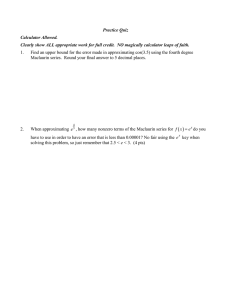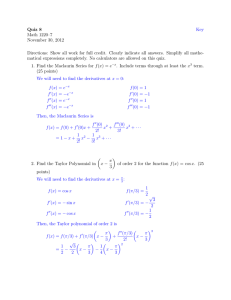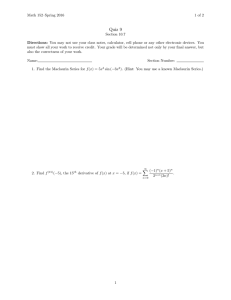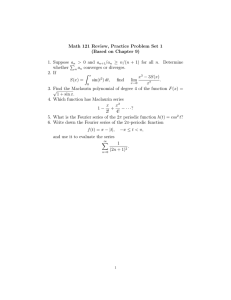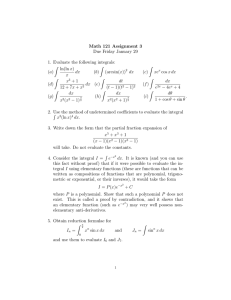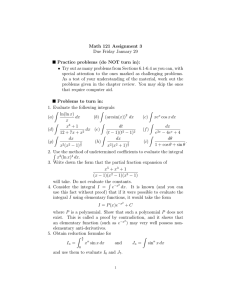BC 2,3 Problem Set #3 Name: ______________ (Due Friday, October 19)
advertisement
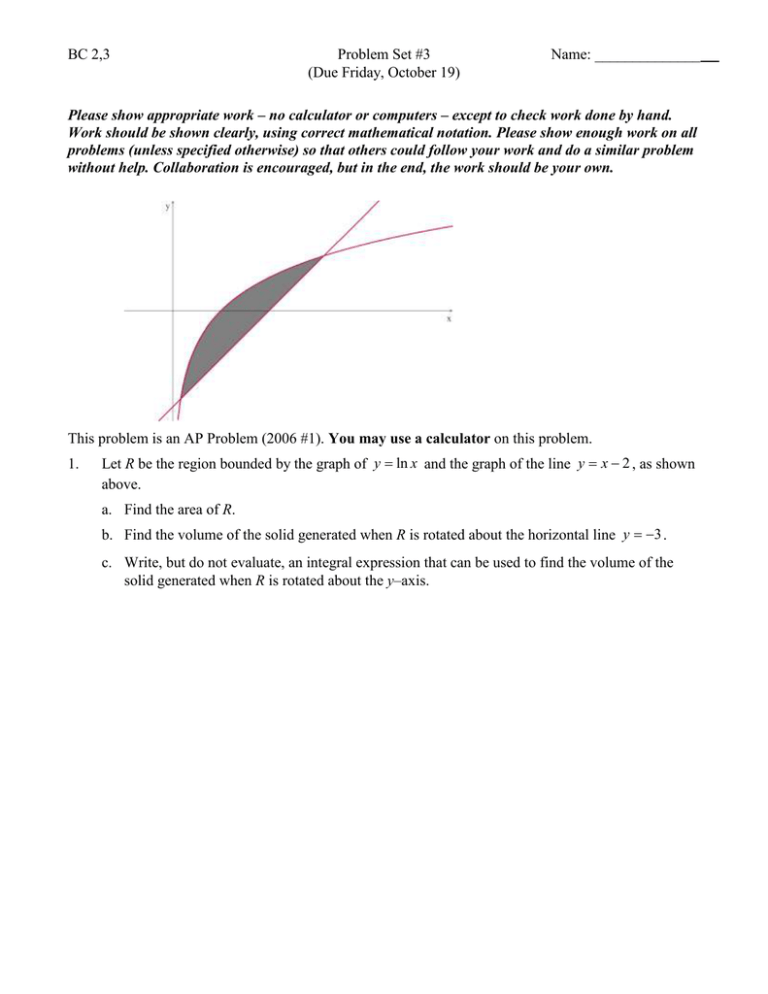
BC 2,3 Problem Set #3 (Due Friday, October 19) Name: ______________ Please show appropriate work – no calculator or computers – except to check work done by hand. Work should be shown clearly, using correct mathematical notation. Please show enough work on all problems (unless specified otherwise) so that others could follow your work and do a similar problem without help. Collaboration is encouraged, but in the end, the work should be your own. This problem is an AP Problem (2006 #1). You may use a calculator on this problem. 1. Let R be the region bounded by the graph of y ln x and the graph of the line y x 2 , as shown above. a. Find the area of R. b. Find the volume of the solid generated when R is rotated about the horizontal line y 3 . c. Write, but do not evaluate, an integral expression that can be used to find the volume of the solid generated when R is rotated about the y–axis. BC 2,3 Problem Set #3 (Due Friday, October 19) Name: ______________ 2. The region bounded by the x-axis and the cycloid: x t sin t , y 1 cos t;0 t 2 is revolved about the y-axis. Find the volume of the resulting solid. BC 2,3 Problem Set #3 (Due Friday, October 19) Name: ______________ 3. Let (n) x n 1e x dx . This is known as the Gamma Function. 0 a. Show that this integral converges when n 0 . b. Show each of the following: i. (1) 1 , ii. (n 1) n (n) , iii. (n 1) n! for all positive integers n. 1 c. Find . You may look this up, use your calculator, or do the integral by hand. 2 BC 2,3 Problem Set #3 (Due Friday, October 19) Name: ______________ 4. Let f ( x) x cos x . Find the 8th degree Maclaurin polynomial for f. 5. Let g ( x) x f ( x) , where f is a function that has derivatives of all orders. a. Show that g ( n ) ( x) n f ( n 1) ( x) x f ( n ) ( x) b. Suppose that Pn ( x) is the nth degree Maclaurin polynomial for the function f. Use part a to show that x Pn ( x) is the Maclaurin polynomial of degree (n + 1) for the function g. c. Write something that indicates that you understand how this relates to problem 4. It may be something as simple as “wow” or “cool”.
